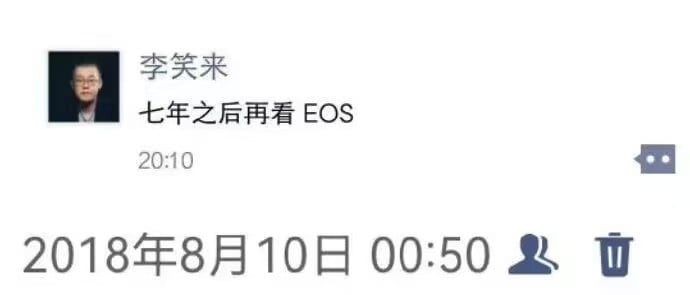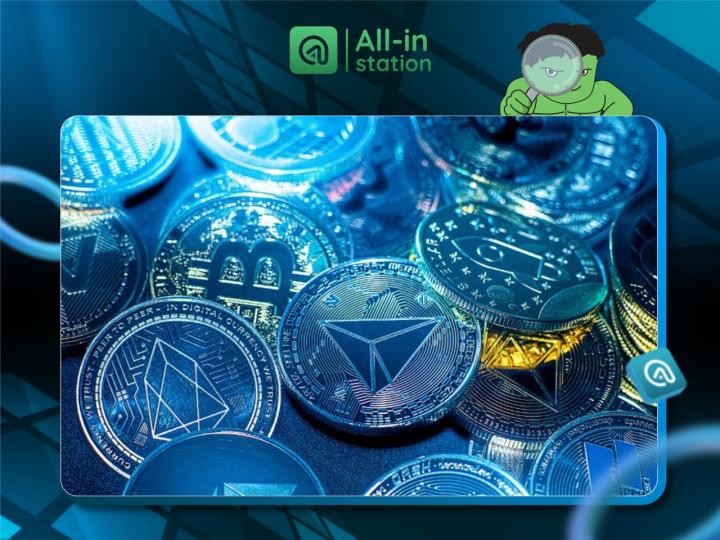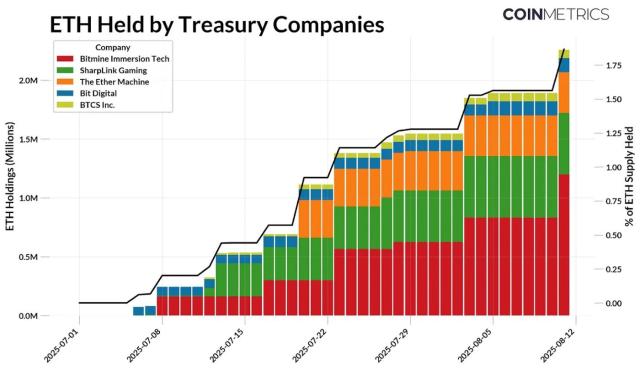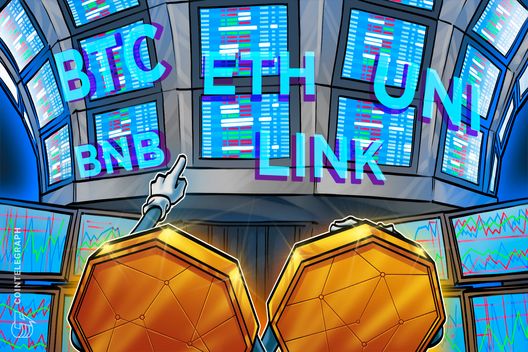In 2017, Li Xiaolai, an early blockchain investor known as the "Bitcoin Richest Man," shouted to his numerous followers: "Look at EOS again in seven years."

This sentence was like a spell spanning cycles, injecting infinite imagination into the blockchain project that would cost $4.2 billion.
Seven years is enough to change dynasties in the tech field, and even more so in the blockchain world. Those investors who were once passionate about this statement probably never anticipated how the script would unfold seven years later.
The initial promise vanished, former allies went to court, and an "Ethereum killer" named EOS ultimately hatched a financial giant Bullish that was about to ring the bell at the New York Stock Exchange.
This is not a simple product birth story, but a blockchain parable about ambition, capital, betrayal, and rebirth. It started from the pain points commonly existing in the crypto world but led to two completely different endings. On one side is the community's self-redemption, and on the other is capital's glamorous transformation.
Looking back today, seven years later, we see not just the rise and fall of a project, but a microcosm of the entire crypto industry's struggle and evolution between ideals and reality.
Origin of EOS
Let's rewind to 2017 when the blockchain world was at an exciting and maddening crossroads. Ethereum, like a brilliant new star, opened up infinite possibilities for decentralized applications (dApps) with its revolutionary "smart contract" function. However, beneath this star's brilliance, shadows were increasingly apparent.
It was like trying to squeeze onto the only highway to the city center during peak hours. Ethereum was that road, and all dApps were vehicles on it. As more cars poured in, the road became congested, with transaction confirmation times extending from minutes to hours, and the "toll" (gas fee) skyrocketing, sometimes even exceeding the transaction value itself. Developers hesitated, and ordinary users complained. This unintended side effect, then called "Scalability Gridlock" by crypto users, was choking the throat of large-scale blockchain applications.
The high cost was obvious. Many startup ideas died in the womb due to unbearable network fees, with poor user experience keeping blockchain confined to a circle of hackers and speculators. The entire industry was calling for a hero - an "Ethereum killer" who could break these shackles and lead everyone to a broad avenue.
At this moment, a mysterious company registered in the Cayman Islands, Block.one (B1), took the stage with a grand roadmap. Their solution, EOS.IO, promised to build an entirely new blockchain operating system.
It was like claiming to build a superhighway with 128 lanes, capable of accommodating millions of users with near-instantaneous transactions. It sounded a bit exaggerated, but at the time, it seemed almost instant. Most enticingly, it was completely free for users. This promise precisely hit every pain point in crypto at the time.
EOS's Massive Fundraising
To build this dream "superhighway", Block.one planned an unprecedented fundraising spectacle in cryptocurrency history. Instead of traditional venture capital, they launched an initial token offering (ICO) that lasted an entire year.
From June 2017 to June 2018, with a grand vision and Li Xiaolai's highly influential promotion in the Chinese market, EOS raised an astonishing $4.2 billion from global investors. This amount was enough to make any dream a reality.
However, when the EOS mainnet went online in June 2018, the mist did not clear but became even denser. The community quickly encountered its "darkest moment".
First, the DPoS consensus mechanism, which was supposed to be a model of efficient governance, quickly evolved into a game for oligarchs. Voting rights were highly concentrated among a few large holders and exchanges, with bribery scandals emerging endlessly, rendering the decentralization ideal mere empty talk.
The supposedly "free" resource model became a disaster. When the network was slightly busy, users needed to stake an astronomical number of EOS tokens to get transaction priority, causing ordinary users' transactions to completely stall. This superhighway, EOS, was paralyzed as soon as it was built.
But the most fatal blow came from Block.one itself. With $4.2 billion in hand, they did not invest the promised $1 billion in ecosystem development. Instead, like a squirrel, they turned these funds into the company's own "winter storage".
$2.2 billion was used to purchase stable US Treasury bonds, and they quietly accumulated over 160,000 bitcoins, becoming one of the world's largest Bitcoin holders. Community members watched in disbelief as funds meant to build their home were used to fortify the founding company's financial fortress and incubate a social platform called Voice, completely unrelated to EOS.
It was like walking naked to the neighbor's door - a blatant betrayal. The EOS community felt like homeowners who had been scammed of their life savings, watching the developer use the money to build a more luxurious private villa next door while their own home became an unfinished building.
At the bottom of despair, a "key question" began to ferment and brew within the community.
This question did not come from the founding team, but from the community itself, raised by people like Yves La Rose, who later became the head of the EOS Network Foundation (ENF): "What if our goal is not to wait for charity, but to reclaim sovereignty? What if we are the true owners of EOS?"
EOS Community Uprising
This subversive question ignited the spark of rebellion in the EOS community. The spark of inspiration was not born in a genius's mind, but from the collective awakening of countless disappointed individuals in forums and telegram groups. They realized they could no longer rely on the indifferent founding company to save them.
A clear and bold core concept was born: the community would launch a "Fork Rebellion" to achieve self-redemption. It was like a colony abandoned by its motherland, deciding to stop paying taxes and declaring the establishment of its own independent government.
This "independent government" was the EOS Network Foundation (ENF) established in August 2021. It had no fancy offices and no capital as robust as Block.one's. Its initial prototype was merely a shadow cabinet composed of community leaders and developers, but their actions were lightning-fast.
A decisive lightning moment occurred in December 2021.
Coordinated by the ENF, EOS's super nodes reached a consensus and voted to freeze the remaining approximately 68 million EOS tokens that had not been unlocked from Block.one. This precisely cut off the channel through which Block.one had been continuously "bleeding" the EOS network. This was not just a technical operation, but a community "declaration of independence". At that moment, developers cheered in the community, knowing that they had finally wrested the steering wheel from an indifferent driver, despite the long road ahead.
EOS Finally Forked Emotionally
From that moment, the EOS story branched into two entirely different timelines, heading towards two completely different worlds.
In the EOS world, a grand "post-disaster reconstruction" began. The ENF led the community to complete its first truly "successful application". In September 2022, they successfully performed a hard fork, migrating the codebase from Block.one's controlled EOSIO to a new community-led protocol called Antelope. This proved that the community's power was sufficient to drive core technological evolution, even without founders.
The network, once paralyzed by its resource model, was revitalized. The ENF launched an Ethereum-compatible EOS EVM, greatly lowering the entry barrier for developers, as if building a bridge to a prosperous continent for this isolated island.
They also invested funds into ecosystem project development through platforms like Pomelo. To completely bid farewell to the controversial past, the EOS network even recently rebranded as Vaulta.
Further Reading: EOS Rebrands to $Vaulta to Enter Web3 Banking, Can It Restore "Ethereum Killer" Glory?
The ripple effect of this story far exceeded EOS itself. It established a beautiful case for the entire blockchain industry: a decentralized community can legally and effectively "fire" its founding company. It proved that in the Web3 world, ultimate power does not belong to capital, but to consensus.
Meanwhile, in another parallel world, Bullish exchange, the "key product" built with EOS funds by Block.one, was officially born.
This company was born with a silver spoon. Its founding capital came from part of the $4.2 billion ICO: over $100 million in cash, 164,000 bitcoins, and 20 million EOS tokens.
Block.one even poached Tom Farley, former president of the New York Stock Exchange, as CEO and attracted investments from Wall Street giants like Silicon Valley legendary investor Peter Thiel.
In 2023, Bullish acquired CoinDesk, the most influential industry media, for over $70 million, firmly grasping the industry's narrative power.
Its goal was crystal clear from the beginning: to become a fully compliant, institution-facing cryptocurrency exchange, a bridge allowing Wall Street's trillion-dollar capital to safely enter the crypto world. Ironically, the foundation of this bridge was built from the shattered dreams of EOS investors.
Seven Years Proved Bitcoin's Supremacy
Seven years have passed. Li Xiaolai's prophecy was realized in an incredibly dramatic way.
Looking back from 2025, we see two products originating from the same raised capital, yet with entirely different souls.
The EOS community and its reborn network Vaulta still focus on "decentralized sovereignty". This difficult journey taught the community how to build a truly community-governed network, rather than being infatuated with the initial solution promised by the founders.
Bullish, on the other hand, represents the ultimate embodiment of capital efficiency and compliance. It represents a calm and pragmatic value system, utilizing available resources, including the controversial accumulated capital process, to seize the largest future market. Its success is built on Li Xiaolai's profound understanding of traditional financial rules and active embrace of regulation.
Li Xiaolai's success lies in recognizing Bitcoin's future when founding Block.one, a future that is now. His sharp vision is undeniably convincing.
Now, Bullish is preparing to IPO on the New York Stock Exchange, with a target valuation of nearly $5 billion, and its prospectus includes giants like BlackRock. Meanwhile, Vaulta (formerly EOS) is working to wash away its historical stigma through community efforts.
Massive success is sometimes built on ruthless abandonment of ideals. Block.one held onto capital, while the EOS community ultimately won back its soul.








